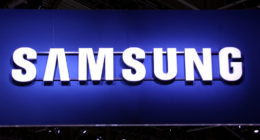To retain its existing share in the country, Aircel is advancing all its cards in the market. From better schemes to filing appeals against Jio, Airtel wants to ensure it remains the preferred telecom brand among Indian citizens. Thus, it is moving ahead and is very close to buying Tikona’s 4G spectrum. With this 4G spectrum under its belt, Bharti Airtel will be able to provide data services to customers at an increased capacity.
As per LiveMint’s sources, the Bharti-Tikona transaction could be in the range of Rs 800-1,000 crore. The outstanding debt on the books of Tikona Digital Networks Pvt. Ltd will also be assumed by Airtel. Hence, the overall purchase price for the deal will range around Rs 1,500-1,700 crores. The deal will, however, conclude over multiple tranches.
Mumbai-based network solutions provider, Tikona bought airwaves in the circles where 4G network for Airtel still lacks. Back in 2010 auctions, it had purchased 20 megahertz (MHz) of 4G airwaves in the 2,300 MHz band in Gujarat, Himachal Pradesh, Uttar Pradesh (East), Uttar Pradesh (West) and Rajasthan for Rs1,058 crore. While Bharti-Airtel has limited 4G waves in the band in these circles such as in UP (East), UP (West) and Rajasthan, it has no airwaves in the 2,300 MHz band. Meanwhile, in Gujarat and Himachal Pradesh, it has 10 MHz each.
One of the sources aware of the development said,
The idea is (for Airtel) to strengthen the overall portfolio and increase capacity to offer data. The deal will help get pan-India 4G coverage in 2,300 MHz band…it will help Airtel fill the gaps in 2,300 MHz.
However, Tikona’s wireless broadband business will remain under the power of the company and will operate as a separate identity in future. The consolidation move takes on Reliance Jio Infocomm who is gearing up to monetize operations from the next month itself.
This development also comes on the heels of Airtel’s recent acquisition of the Indian operations of Norway’s Telenor. This transaction not only increased the telecom carrier’s presence in the 1,800 MHz band but also provided access to 44 million new customers for the company. This made the total user base of Airtel peak to a significant 307 million.
Apart from the progress of the India’s leading telecom service, rival telcos Vodafone and Mumbai-based Idea Cellular are planning a merger as well. This merger is expected to lead to the creation of the largest telecom network of the country (leaving behind Airtel in terms of users), which is the plus side of this deal. It also has its downsides as well. One of the downsides of the merger deal being the impact on the upcoming payments bank business of Vodafone.
According to a sector expert who spoke to Livemint, the consolidation suggests that the industry’s return on invested capital levels are unsustainably low and spectrum ownership and ability to spend will be key to survival in a high data volume environment. He further added,
Our understanding is that Bharti’s balance sheet and solid spectrum portfolio put the company in a position to benefit, especially when Jio starts to charge for its services from 1 April.
The merger will certainly follow TRAI’s norms which state — an operator can hold a maximum of 50% revenue share, 50% subscriber share and 50% spectrum share in each band (excluding 800 MHz) in each circle. Airtel will not breach the terms by letting Tikona hive off the much-needed resources for an independent existence under its own brand.





